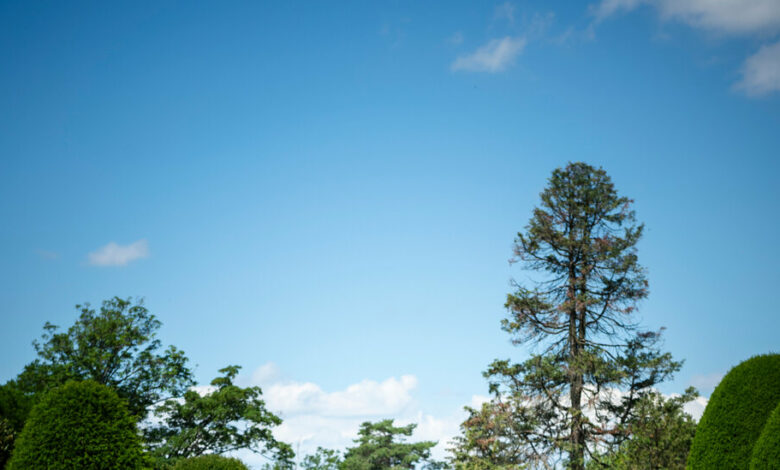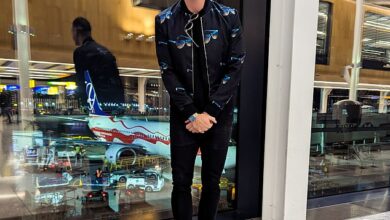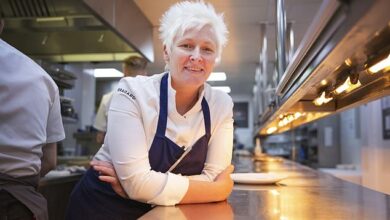Lausanne, where the Olympic Games never end

Every year is an Olympic year in Lausanne, Switzerland, a city of stone buildings, tiled roofs and historic church squares on a hill overlooking Lake Geneva. Home to the International Olympic Committee and the Olympic Museumthe city is involved in the organization of the Games throughout the year, long before and long after the official ceremonies take place. (This year, the Summer Olympics and Paralympic Games, mainly in and around Paris, will take place from July 26 to September 8.)
But the Olympics are just one facet of Lausanne. In the city center, culture-loving visitors will find a new art district which contains three avant-garde exhibition spaces, while the Hermitage Foundation museum celebrates its 40th anniversary. Add stylish new restaurants, chocolate boutiques and pastry shops and you have a culinary centre worthy of medals.
Games: History and traditions in pictures
Long before gold medalists like Romanian gymnast Nadia Comaneci and Jamaican sprinter Usain Bolt became world famous, ancient Greek runner Astylos of Croton was the biggest Olympic celebrity, thanks to his victories in three consecutive Games from 488 to 480 BC. Even more impressive, he did this naked and barefoot (as was the custom for runners of the day).
His story is just one of the remarkable tales told at the Olympic Museum (tickets, 20 Swiss francs, or about $22). From ancient vases to interactive touchscreens, the exhibits trace the history of the world’s most storied sporting competition, starting with its Hellenic origins and ending with this year’s Paris Games, the subject of a special exhibit, “Olympic Paris.”
Along the way, displays delve into the intricacies of stadium architecture, uniform fashions, Opening Ceremony performances, anti-doping technology and even cafeteria menus in the Olympic Villages. Equipment and outfits of famous Olympians are also on display, including a handmade running shoe worn by American athlete Jesse Owens during the infamous 1936 Berlin Games in Nazi Germany. (The shoemaker was Adi Dassler, who later created the Adidas brand.)
An outdoor track and interactive indoor simulators let you test your own skills, from sprinting to slalom skiing. And if you happen to be in Lausanne during the Olympics, a large TV screen outside on the museum grounds will be broadcasting the Games live from Paris.
The museum grounds are also free Olympic Park is open all year round. The vast green expanse offers spectacular views of Lake Geneva and is dotted with 43 sports-themed sculptures and installations by international artists such as Fernando Botero and Alexander Calder. Among the works is a statue of Baron Pierre de Coubertin — a French aristocrat who played a central role in the revival of the Olympic Games in the modern era.
Museums: Man Ray, Monet and more
Next to the train station, the new cultural district of Lausanne, Platform 10celebrates the 100th anniversary of the Surrealist Manifesto — a series of 1924 publications whose authors include French artist André Breton — with several exhibitions devoted to that celebrated literary and artistic movement.
Groundbreaking works by Breton and his colleagues form the core of “Surréalisme. Le Grand Jeu,” a comprehensive exhibition of surrealist works, historical and contemporary, at the Cantonal Museum of Fine Arts (through Aug. 25). The works are as strange and dreamy as you might hope. A sculptural birdcage filled with sugar cubes, called “Why Not Sneeze, Rose Sélavy?” (Marcel Duchamp, 1921). A glittering canvas of elephants whose reflections become swans in a mystical lake (Salvador Dalí’s “Cygnes Se Reflétant en Éléphants,” 1937). A photograph of a woman with instrument holes painted on her back (“Le Violon d’Ingres,” by Man Ray, 1924). And many more.
Man Ray is the subject of a solo exhibition (“Man Ray: Liberating Photography”, through August 4) on the square at the Photo Elysée museum, which occupies a jagged white cube that resembles a futuristic iceberg. His stylized portraits — Picasso in his studio, Gertrude Stein in a dinner jacket, Igor Stravinsky looking bewildered — capture the cultural turmoil of 1920s Paris, while hallucinogenic avant-garde films like “Return to Reason” (1923) offer groundbreaking visions of the then-new medium.
In the same building is the MUDAC design museum is organizing “Objects of Desire,” an exhibition of furniture and household objects inspired by surrealism (through August 4): a sofa in the shape of lips (by Studio 65), a life-size black plastic horse with a lampshade on its head (by Moooi), a teapot in the shape of a pig’s skull (by Studio Wieki Somers). A ticket to all three museums costs 25 francs.
Another commemorative exhibition — celebrating the 150th anniversary of the first Impressionist exhibition in 1874 — fills the aristocratic 19th-century rooms of the Hermitage Foundation, a magnificent country house with manicured gardens and impressive views of Lake Geneva. The show, titled “Masterpieces From the Langmatt Museum” (June 28 to Nov. 11), rewards visitors with some 60 paintings — Renoir landscapes, Degas nudes, and works by Matisse, Monet, Cézanne, Mary Cassatt and others — on loan from the Langmatt Museum in Baden, Switzerland (currently closed for renovation), known for its excellent collection of Impressionist works. Admission: 22 francs.
Food & Drink: Lausanne Goes Locavore
Already home for the Noz Chocolatier boutique and the Hotel Swiss Chocolate by FassbindRue Marterey added last year Applya bakery and chocolate shop where pastry chef Arnaud Dousse, a veteran of top Swiss hotels, creates finely crafted croissants (1.90 francs), pains au chocolat, lemon tarts and other baked goods, along with a host of chocolates. The shop opens most days at 6:30 in the morning and is an ideal place for a grab-and-go breakfast.
Last year was also a bumper year for restaurants. The regional parliament’s towering Scandinavian private lunchroom, breaking with long tradition, The Buvette Vaudoiseopen to the public, allowing non-elected officials to sample the restaurant’s traditional Swiss fare, from the award-winning crispy cheese puff pastry (known as a Malakoff; 9 francs) to thick slices of grilled trout in a cream sauce flavored with Chasselas white wine (25 francs). The lunch-only restaurant sources most of its ingredients from the surrounding Vaud region and serves a variety of wines produced on estates owned by lawmakers.
The newest dining hotspots are also dedicated to Swiss sourcing. Decorated in an eclectic, vintage chic style, The apartment feels like the sprawling home of a nice designer friend, with a cupboard — yes, literally a cupboard — full of bottles of wine. (Guests rummage through them to choose theirs.) Chef Luis Zuzarte’s menu, notable for its long list of local purveyors, might feature crispy roasted Sbrinz cheese with garlic mayonnaise and pickles, or succulent, meaty pulled pork smoked over hay. Four courses (Tuesdays and Wednesdays only) are 85 francs; seven courses (every night) are 145 francs.
Japanese flavors permeate the dishes Jajaffea year-old, airy, minimalist restaurant with a relaxed atmosphere and tattooed chefs. Old-school vinyl albums provide the soundtrack while young waiters serve up tempting Japanese-Swiss mash-ups, including freshly whipped sunflower cream with slices of Tokyo turnip and karasumi (dried fish roe) and raw chunks of red mullet in mayonnaise flavoured with Swiss sake. Set menus cost 75 francs (four courses) and 110 francs (seven courses).
Follow New York Times Travel on Instagram And Sign up for our weekly Travel Dispatch newsletter to get expert tips on smarter travel and inspiration for your next vacation. Dreaming of a future vacation or just traveling from the comfort of your own home? Check out our 52 Places to Go in 2024.




